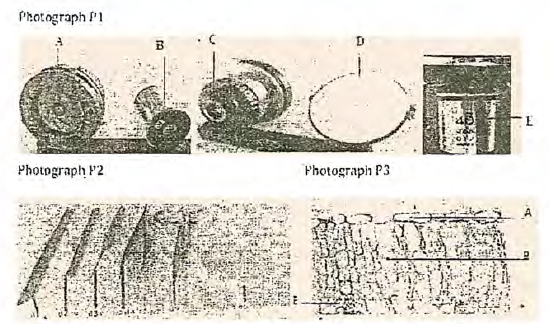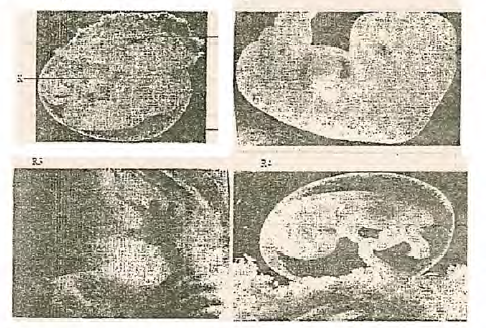- You are provided with a specimen labeled R which is a plant organ.
- Carefully break it open along its length to expose inner parts hence draw a well labeled diagram of specimen R showing at least four parts. (3 marks)
- Crush the already broken specimen R into fine powder, put into a test tube and add 6ml of water to make solution R. Using the provided reagents carry out tests to identify the food substances present in solution R. (9 marks)
- The photograph p1 below illustrates some components of a light microscope while P2 shows some instruments used for dissection in a biology laboratory. Study them carefully and answer the questions that follow.
- Identify the parts of the microscope labeled A,B,C,D and E and in each case state its function. (5 marks)
- Name the instruments labeled d1, d2 and d3. (3 marks)
- State the role of d4, d5 and d6 during dissection. (3 marks)
- Photograph p3 shows the internal structures of a dicotyledonous leaf.
- Name the parts labeled A and E. (2 marks)
- State two adaptations of cells B to their function. (2 marks)
- If the total magnification of the micrograph is x 25,000, calculate the actual length of the vertical cross-section of the leaf. (3 marks)
- Photographs R1, R2, R3 and R4 show fetuses at different stages of development after implantation in a human being. Use them to answer the questions that follow.
- Arrange the stages of development beginning with the latest. (1 mark)
- Name the parts labeled K, L and M in photograph R1. (3 marks)
- Name
- The blood vessels present in the part labeled K. (2 marks)
- The tissue that form the part labeled L. (3 marks)
- State one role played by the fluid enclosed by part M. (1 mark)
Join our whatsapp group for latest updates
Tap Here to Download for 50/-
Get on WhatsApp for 50/-
Download Bunyore Maranda MOCKS 2016 Biology Paper 3.
Tap Here to Download for 50/-
Get on WhatsApp for 50/-
Why download?
- ✔ To read offline at any time.
- ✔ To Print at your convenience
- ✔ Share Easily with Friends / Students



